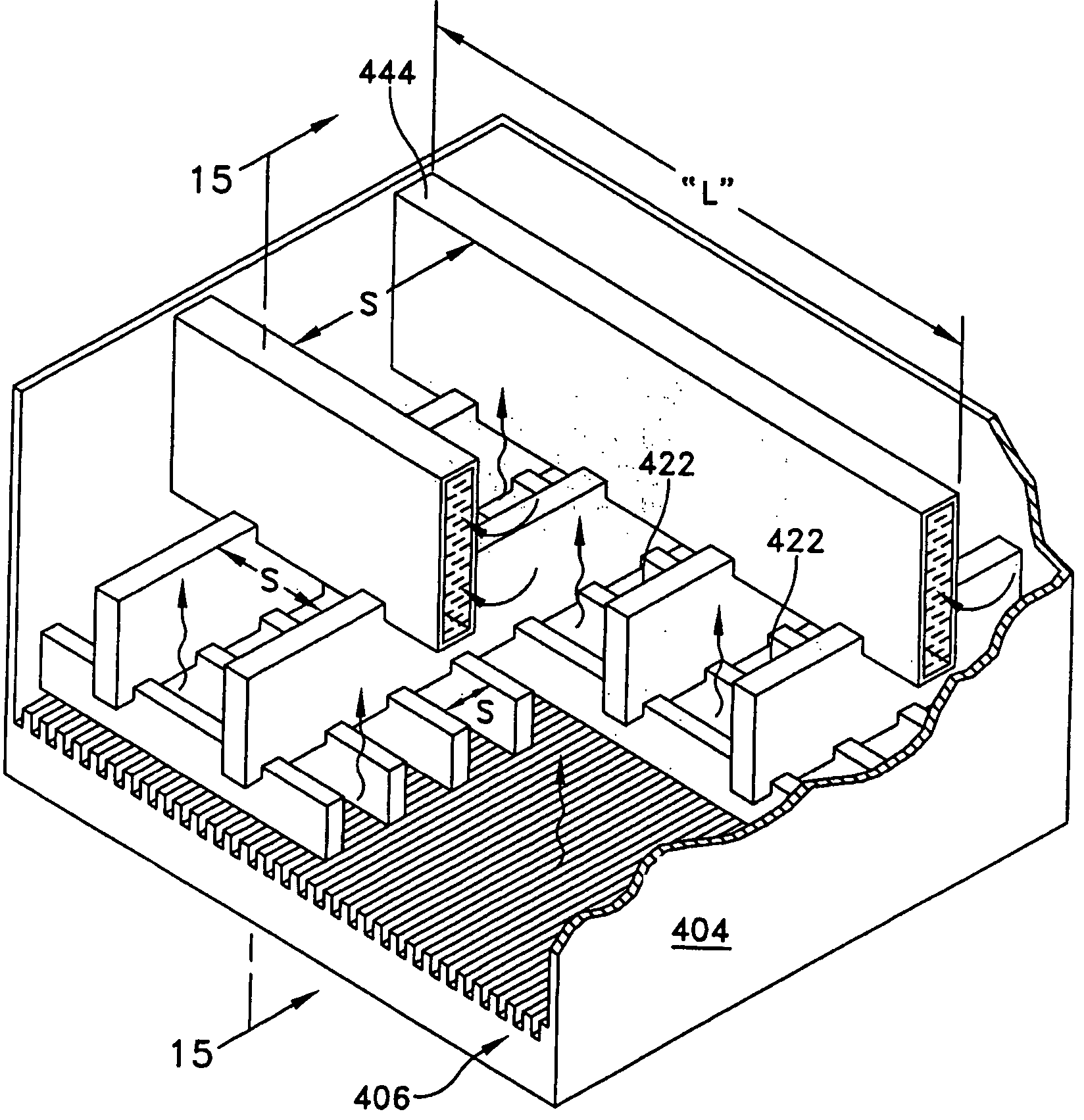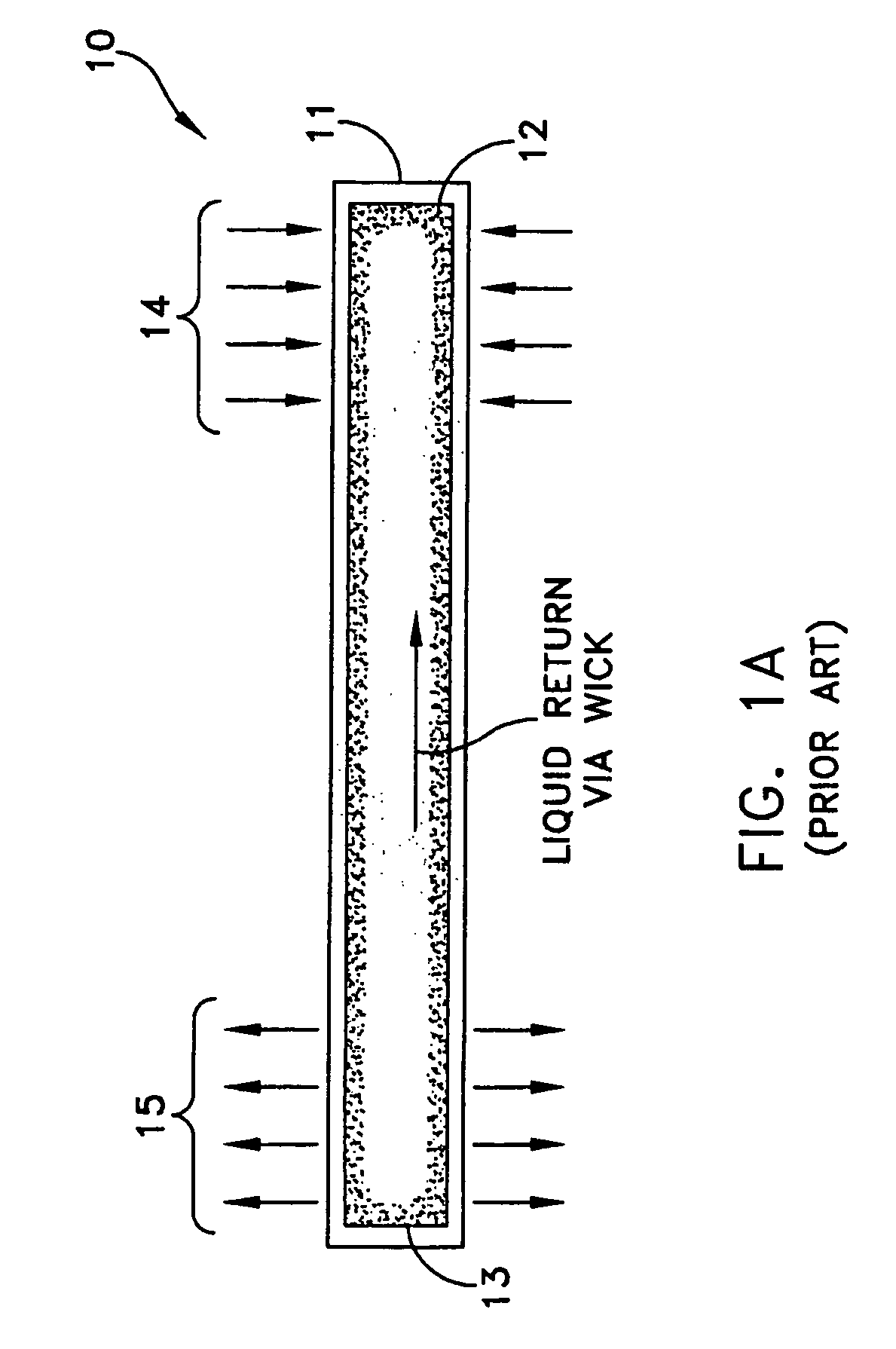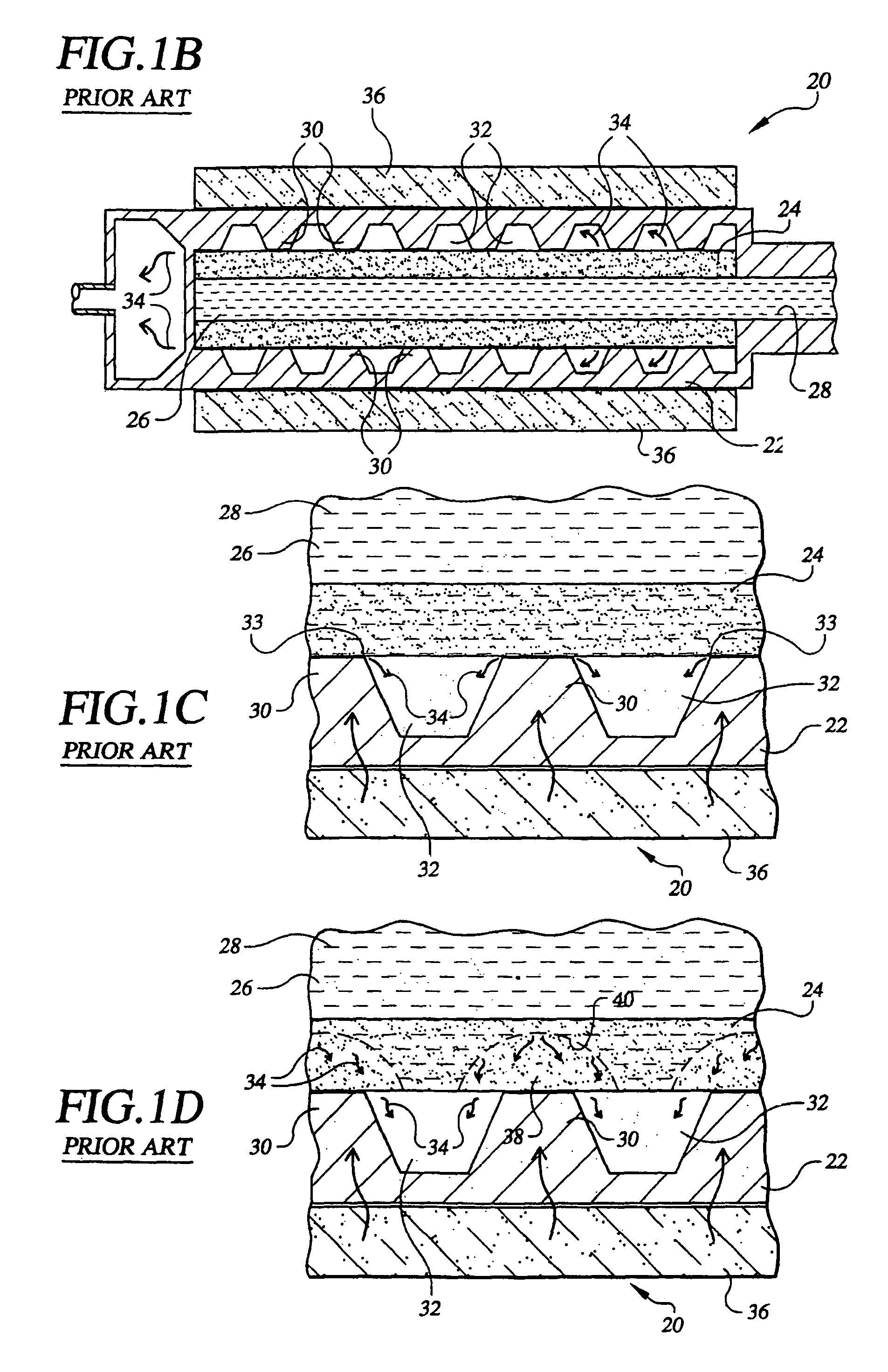Capillary condenser/evaporator
a condenser and evaporator technology, applied in indirect heat exchangers, cooling/ventilation/heating modifications, lighting and heating apparatus, etc., can solve the problems of limiting the heat transport capacity of heat pipes, affecting the performance of wicks, and reducing the cross-sectional area, so as to achieve the effect of decreasing the cross-sectional area
- Summary
- Abstract
- Description
- Claims
- Application Information
AI Technical Summary
Problems solved by technology
Method used
Image
Examples
Embodiment Construction
[0038]Referring now to the drawings, FIG. 2 illustrates a capillary heat exchanger which may be configured as an evaporator or condenser and which is identified generally by the numeral 100. For purposes of explanation, the following description will be in terms of a capillary evaporator, with the understanding that the description would also be applicable to a condenser. Like evaporator 20 discussed in the background section, above, capillary evaporator 100 may be incorporated into a two-phase heat-transfer system, such as the loop heat pipe (LHP) and capillary pumped loop (CPL) systems mentioned above, among others. Capillary evaporator 100 may be any size and / or shape suitable for interfacing with any of a variety of heat sources, such as heat source 102, that is desired to be cooled. Those skilled in the art will appreciate the variety of shapes and / or sizes of capillary evaporator 100 that may be made in accordance with the present invention and that the various capillary evapo...
PUM
 Login to View More
Login to View More Abstract
Description
Claims
Application Information
 Login to View More
Login to View More - R&D
- Intellectual Property
- Life Sciences
- Materials
- Tech Scout
- Unparalleled Data Quality
- Higher Quality Content
- 60% Fewer Hallucinations
Browse by: Latest US Patents, China's latest patents, Technical Efficacy Thesaurus, Application Domain, Technology Topic, Popular Technical Reports.
© 2025 PatSnap. All rights reserved.Legal|Privacy policy|Modern Slavery Act Transparency Statement|Sitemap|About US| Contact US: help@patsnap.com



